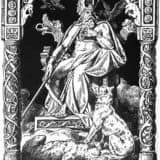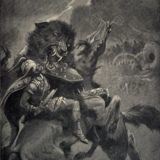Who is Odin? The One-Eyed God of Wisdom, War, and Magic
Learn more about the ruler of the Aesir.
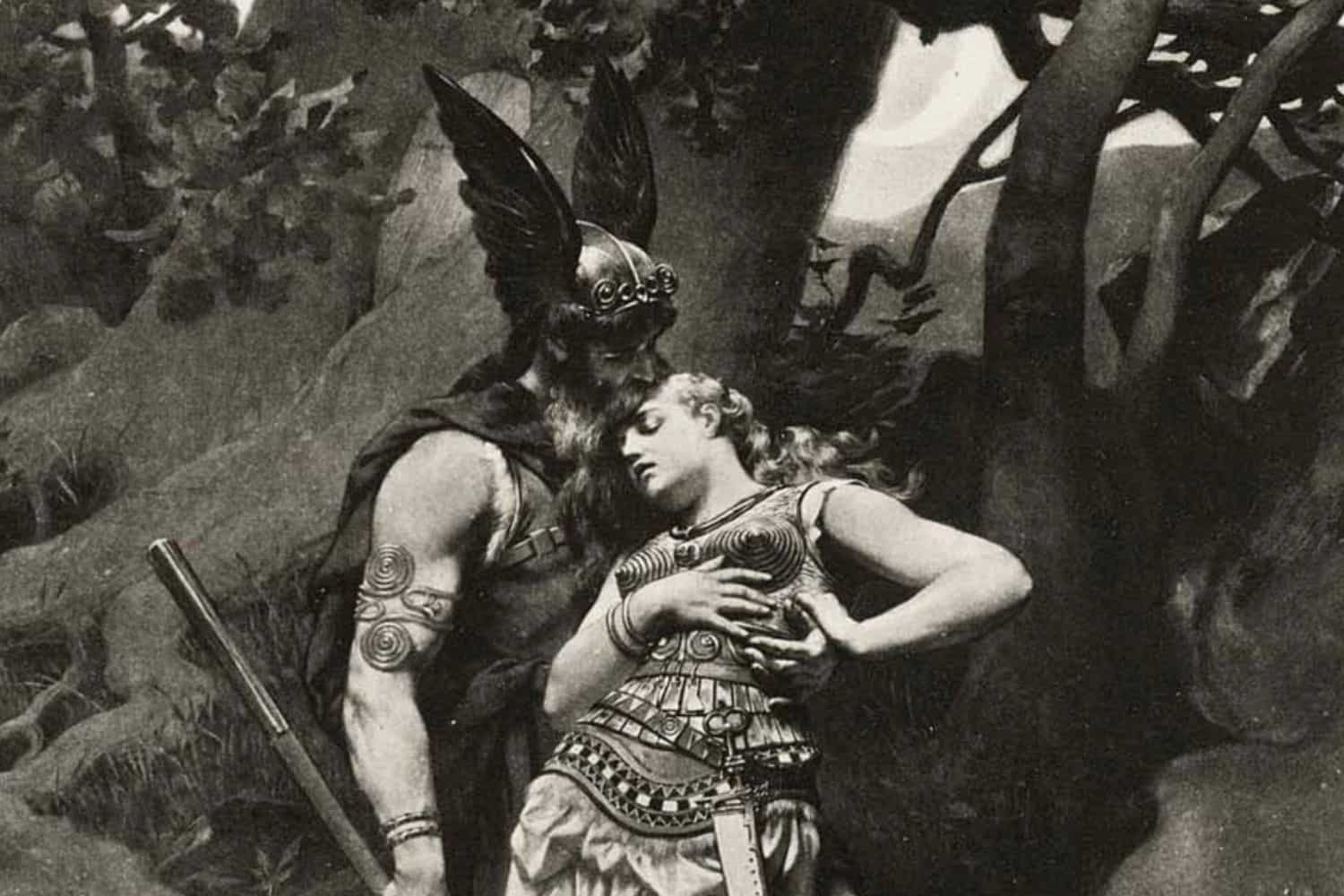
As an Amazon Associate we earn from qualifying purchases. This post may contain affiliate links from Amazon and other sites that we collect a share of sales from. You may learn more here.
Odin is the most powerful god within the Norse pantheon. The one-eyed, shapeshifting, bearded god who rules over Valhalla is the god of war, wisdom, magic, runes, and poetry.
The father of Thor and husband of Frigg, is a complex character, which you can partially glean from his name. In Old Norse, his name is Óðinn, taken from Óðr, which means something akin to divine madness, ecstasy, or fury.
Artists often draw Odin as an old man, holding his spear and wearing a cloak with a wide-brimmed hat to match. Yet, from his throne in Asgard, he not only oversees the Aesir deities, but also often visits other realms in search of knowledge… or war.
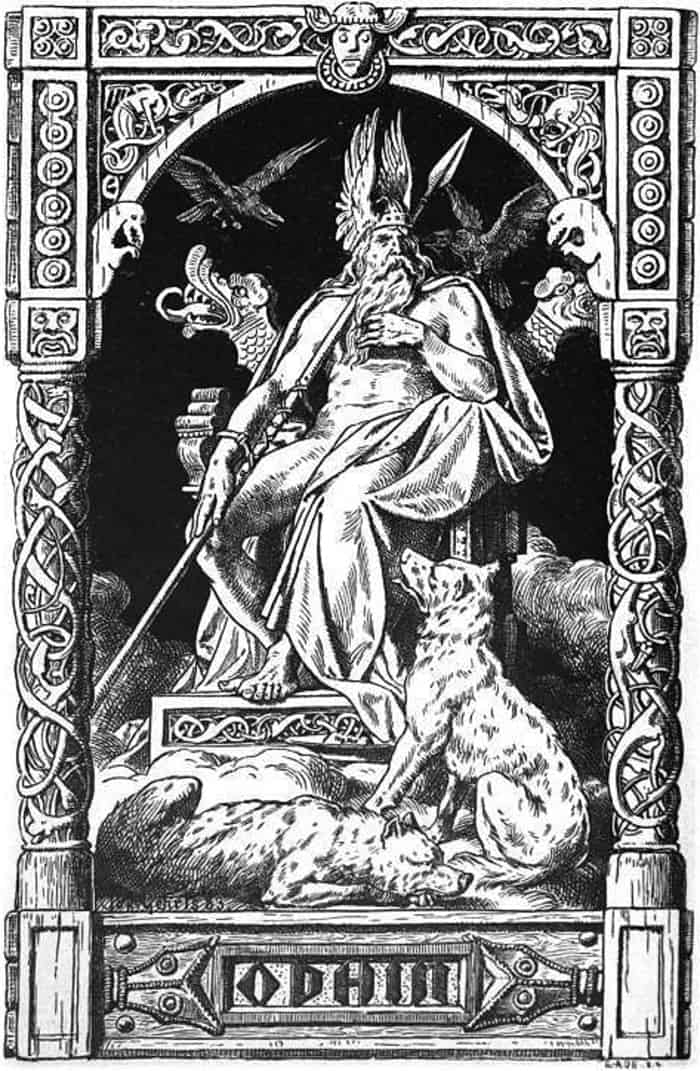
What is Odin the God of?
Odin is the chief Norse god of wisdom, magic, runes, and poetry. He is also the god of death and war.
Some of the most famous myths featuring Odin include him sacrificing his own eye. In another, Odin sacrifices himself to himself in order to gain wisdom and learn the runes.
Odin, also known as the All-Father, is also in command of his personal “hall of the dead,” or “hall of the slain,” called Valhalla.
During the Viking Age, it was widely believed that everyone who died in battle would enter Valhalla. In Norse mythology, Valhalla is the afterlife location of never-ending conflict.
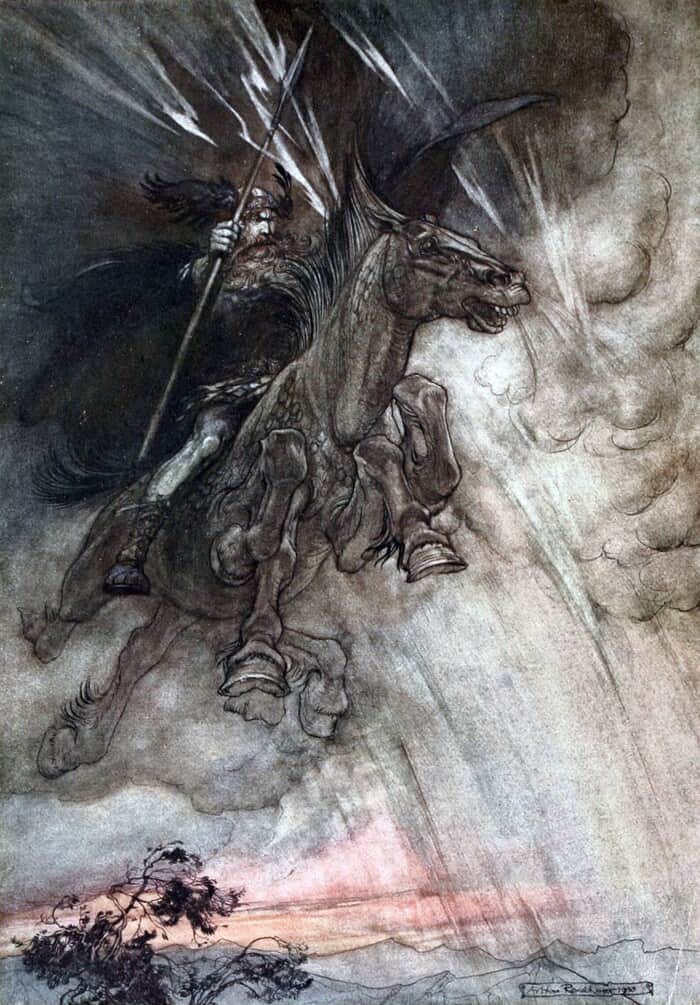
The First Appearance of Odin
The first mentions of Odin come from the first Norse myths. While some Old Norse sources, such as the Poetic Edda and Prose Edda, portray him as an enthroned monarch of the gods, Odin also retains a special place in Old English writings.
There, they describe him as a realistic ancestral figure among ancient royalty. He’s also regularly mentioned as a foundational figure among some of the Proto-Indo Europeans and Germanic peoples.
One of the earliest recorded accounts of Odin and pre-Christian Scandinavian religious rituals is in Adam of Bremen’s Gesta Hammaburgensis Ecclesiae Pontificum, written in 1080. Adam asserted to be in possession of firsthand information about paganism in Sweden, but it’s worth keeping in mind that he was writing from a Christian point of view.
His book also provides some information about Odin in his description of the Uppsala Temple, a religious temple dedicated to the Norse gods. According to Adam of Bremen, Thor and Frigg were worshiped in the same temple as Odin (Wotan).
However, much of what we know about the Norse myth comes from the Poetic and Prose Eddas. The Poetic Edda is a compilation of Old Norse poems. The Prose Edda is a book from the 13th century written and compiled by Icelandic scholar Snorri Sturluson.
Sturlson also wrote the Kings’ saga, or Ynglinga Saga, in Old Norse around 1225. This saga is the opening chapter of his Heimskringla and tells the tale of the arrival of Odin in Scandinavia.
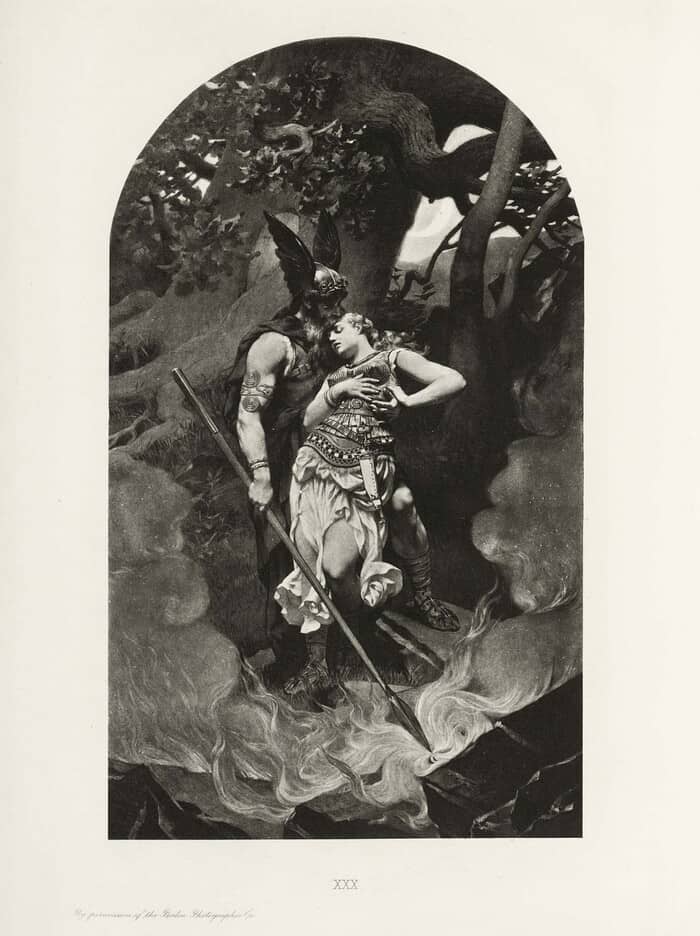
Who Is On Odin’s Family Tree?
According to Sturluson, Odin is one of three sons of the giants Bor and Bestla.
Bor is the jotun (giant) son of the primordial being Buri who was licked from salty blocks at the beginning of time by the mythological cow known as Audhumla.
Bor married the giantess Bestla and together they had Odin, Vili, and Ve, who are appropriately referred to as Bur’s sons in the Eddic poetry of Voluspa. In the Poetic Edda and skaldic verses in Norse mythology, Odin is described as the son of Bestla.
Odin had several sons with goddesses and giantesses alike. With Frigg, he had the twin gods Baldr and Hodr. With the earth goddess Jord, he had Thor.
With Gríðr (Gríd) he had Vidar. Vidar is considered the strongest god next to his brother Thor. In order to exact revenge for Odin’s passing during the events of Ragnarok, Vidar would kill Fenrir.
Who Are Odin’s Sons?
- Thor
- Baldr
- Víðarr (Vidar)
- Váli
- Heimdallr
- Bragi
- Týr
- Höðr (Hodr)
- Sæmingr
- Sigi
- Ítreksjóð (Itreksjod)
- Skjöldr (Skjold)
- Hermóðr (Hermod)
What Does Odin Look Like?
Odin appears in several guises. In ancient and modern art, artists often illustrate Odin as a one-eyed, grey-haired elderly man. He holds a staff, and wears a wide-brimmed hat and a traveling coat.
In The Viking Spirit: An Introduction to Norse Mythology and Religion Daniel McCoy classifies Odin as a shapeshifter, capable of changing his skin tone and physical appearance at will.
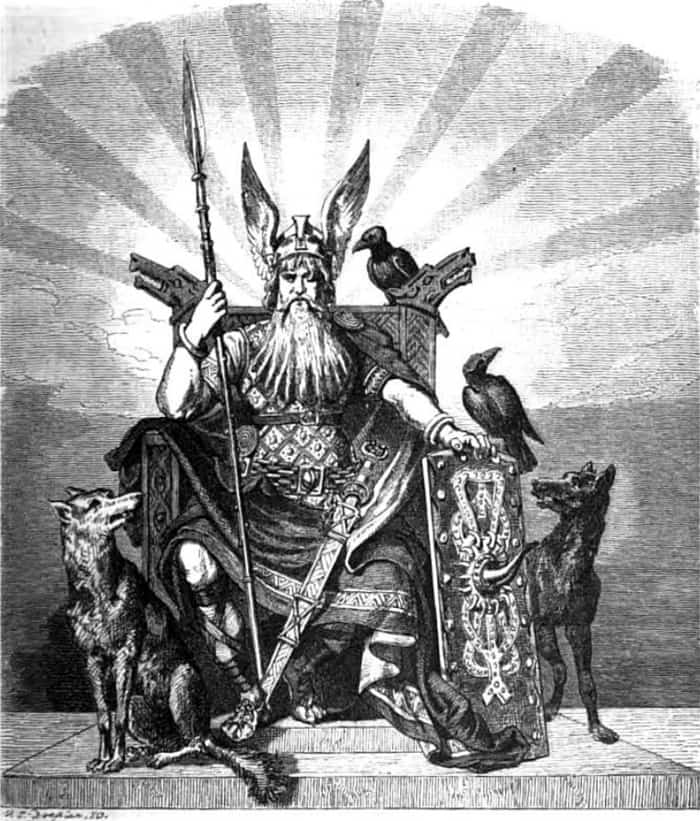
What Animals Are Associated With Odin?
1. Hugin and Munin
These are Odin’s two ravens who travel the realms and report back on what they see.
From the Grimnismal in the Poetic Edda:
“Two ravens perch on his shoulders and speak into his ear
all the news they see or hear; their names are Hugin and Munin.
He sends them out at daybreak to fly all over the world,
and they return in the evening;
because of this, he is able to find out about many things,
and so he is called the raven-god.”
2. Sleipnir
The Sleipnir is Odin’s eight-legged horse that can traverse all worlds. He also rides on it during the Wild Hunt and delivers gifts to children who leave their boots full of straw. It’s why some believe there’s a strong connection between Odin and Father Christmas, or Santa.
According to Grimnismal, Sleipnir is the best horse. It’s also the child of Loki and Svadilfari.
3. Geri and Freki
These are the wolves of Odin. In Grimnismal, there is a tale about Odin sharing his food with his wolves in Valhalla during a warrior feast.
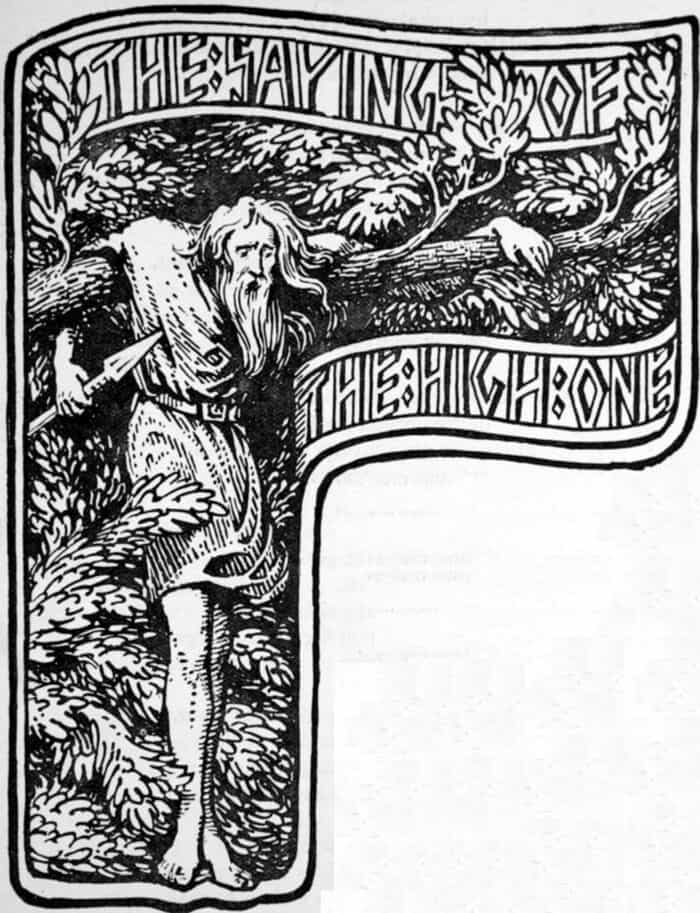
Popular Odin Myths
Odin’s Missing Eye
Even though Odin is a god of wisdom, Mimir was the wisest of the gods of the Aesir tribe and also thought to be a water spirit.
Odin reasoned that Mimir’s deep awareness must have come from the supernatural waters of his well, below which was a root of Yggdrasil tree. In an effort to gain his knowledge, Odin asked to drink from well. Mimir agreed, but told him the price was his eye.
Odin agreed and gouged out one of his eyes to claim the well’s water and wisdom. In drinking the water, he gained Mimir’s knowledge and then became the wisest of the Norse gods.
Odin Hanging From The Sacred Tree Yggdrasil
After gouging out his eye, Odin made the decision to discover the meanings of the runes. To do so, he hung himself from a branch on the Yggdrasil, “the tree of life” or world tree, and stabbed himself with his spear, the Gungnir.
He stayed there for nine days and nine nights, holding himself in a state between life and death, peering into the Well of Urd where the Norns keep the secrets of the runes. On the ninth day, the runes revealed their mysteries to him and Odin sprang from Yggdrasil with an exalted scream.
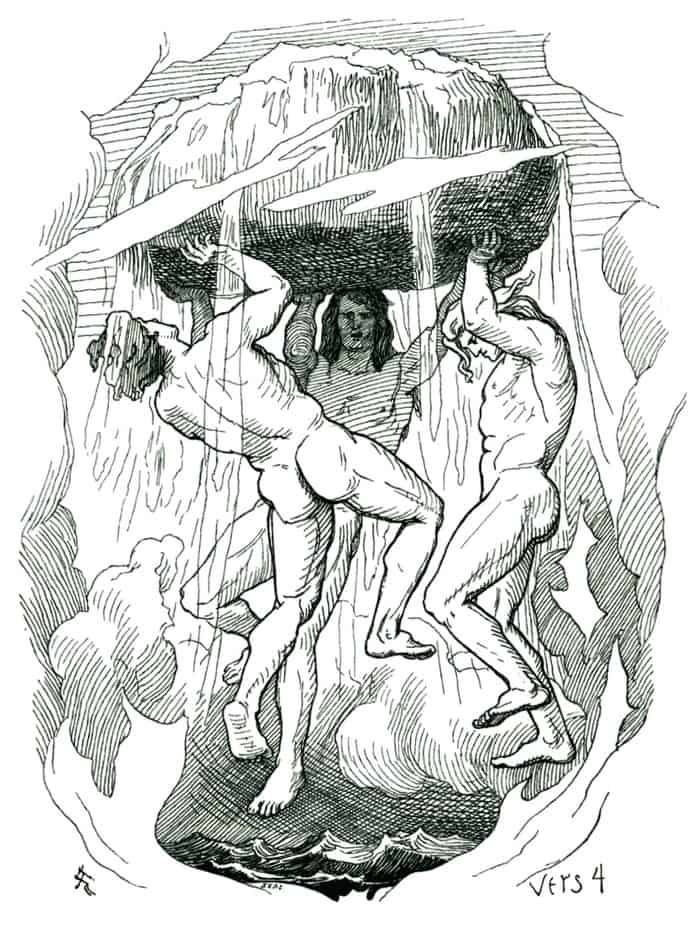
The Creation of the World and First Humans: Ask & Embla
In the cosmological stories of Norse myth, Odin and his brothers Ve and Vili killed the giant Ymir and used his body to form the world.
Odin fashioned the world from the corpse of Ymir. The sea was Ymir’s blood. The ground was his flesh. The sky was his skull. The mountains were his bones and the trees were his hair.
They then created Ask and Embla, the first man and woman, from two elm trees the brothers discovered while they were strolling along a beach.
Vili gave them shape, speech, feelings, and the five senses. Ve provided them with movement, mind, and intelligence. Odin gave them spirits and life. Finally, the Aesir decided that Midgard should be humans’ permanent home.


